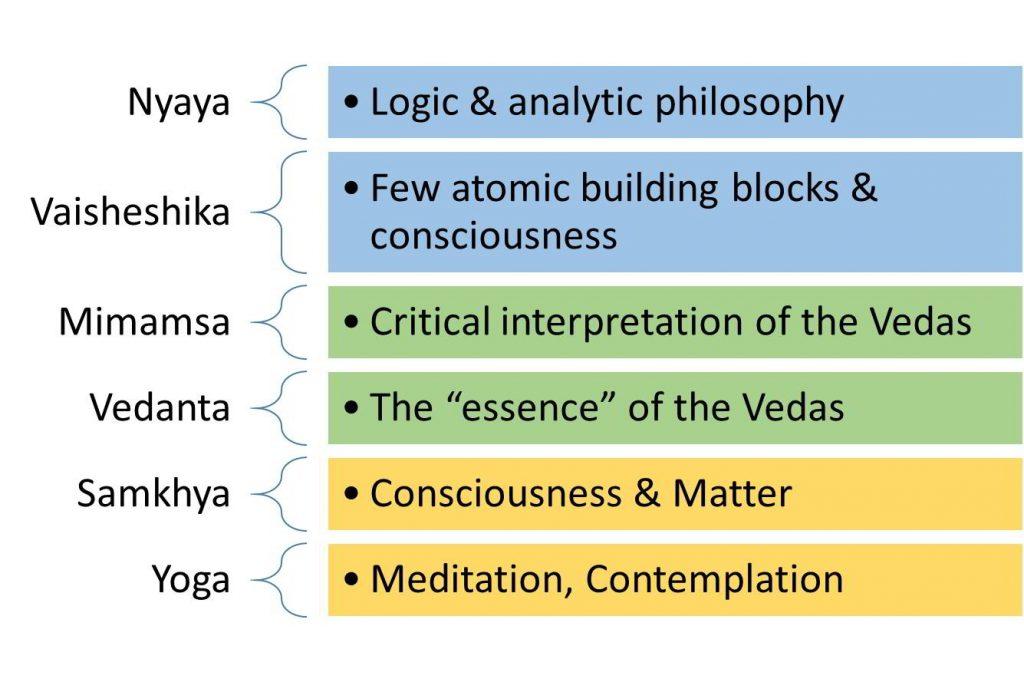Skip to main content
Vedic Schools of Philosophy
Vedic Schools of Philosophy
I. Overview of the Vedic Darshanas

-
Six Systems: The six systems of Indian philosophy classified as Vedic are:
- Samkhya
- Yoga
- Nyaya
- Vaisheshika
- Mimamsa
- Vedanta
-
Shared Acceptance: These traditions are considered Vedic because they all accept the authority (testimony) of the Vedas.
II. Commonalities Among Vedic Darshanas
A. Shared Goal
-
Ultimate Liberation (Moksha): All the six systems share a common goal of attaining final liberation or Moksha.
- Understanding of self (who am I?) is considered a key part of this process
B. Shared Context
-
Jiva, Jagat, and Ishvara: All the six systems acknowledge and work within the same fundamental context of Jiva (self), Jagat (world), and Ishvara (divine).
- However, their approaches, in this context, differ towards achieving the ultimate goal.
III. Differences in Approaches
A. Samkhya and Yoga
-
Focus: Examine the nature of matter (Prakriti) and its role in attaining moksha (liberation)
- Explore how matter influences human consciousness and experience, and the practices to overcome it.
-
Methods: They seek to understand the process and means to reach liberation via exploring matter.
B. Nyaya and Vaisheshika
-
Focus: Seek a route to moksha through valid knowledge (pramana) and understanding of the nature of reality.
- They explore the methods of valid knowledge and nature of the world to attain Moksha.
-
Methods Emphasize logic and epistemology as pathways to liberation.
C. Mimamsa and Vedanta
-
Focus: Seek direct guidance from the Vedic corpus.
- They look to the Veda to answer the question of liberation.
-
Interpretation: They believe that the path to moksha is through the proper interpretation and application of the various parts of the Vedas.
- They explore the Vedic texts and its interpretations as a means to achieve liberation.
IV. Shared Context, Different Paths
-
Common Goal and Context: Although they all share the same goal (moksha) and work within the context of Jiva, Jagat and Ishvara; their approaches are different.
-
Varying Emphasis:
-
Samkhya and Yoga: Focus on matter and its role in achieving moksha.
-
Nyaya and Vaisheshika: Emphasis is on epistemology and metaphysics.
-
Mimamsa and Vedanta: Emphasize the role of the Vedic corpus in achieving liberation.
V. Conclusion
- The Vedic systems, while united by a common goal, differ significantly in their methods and focus.

